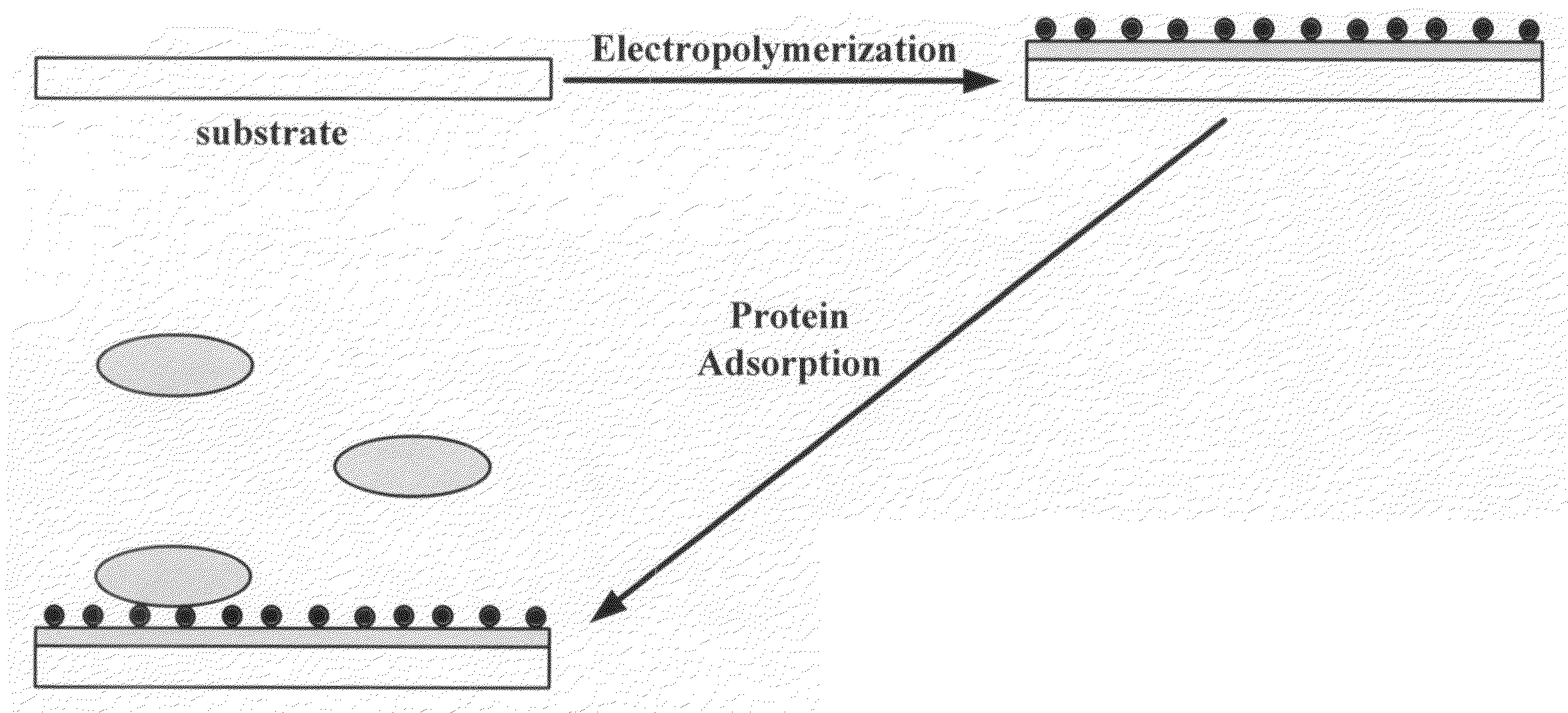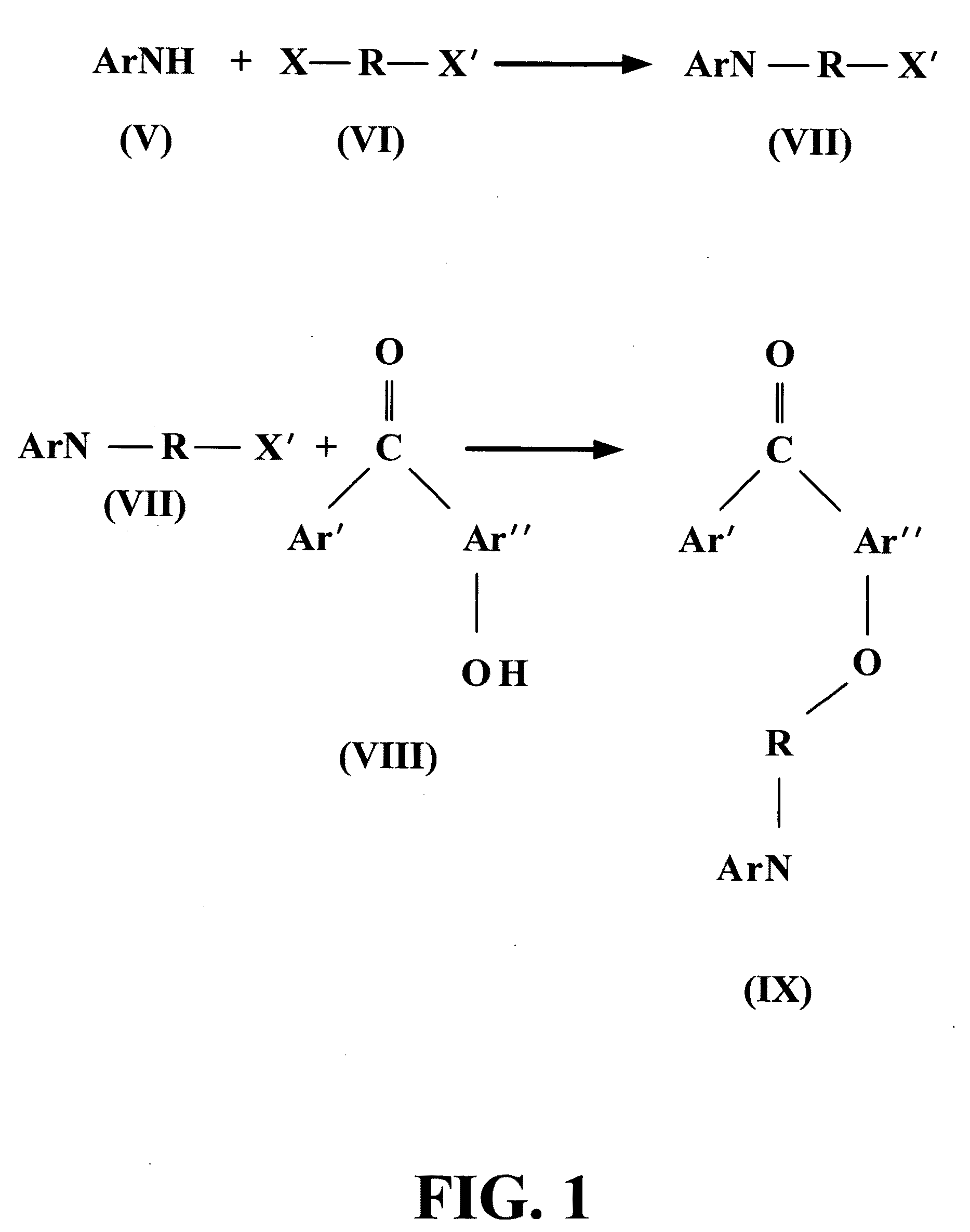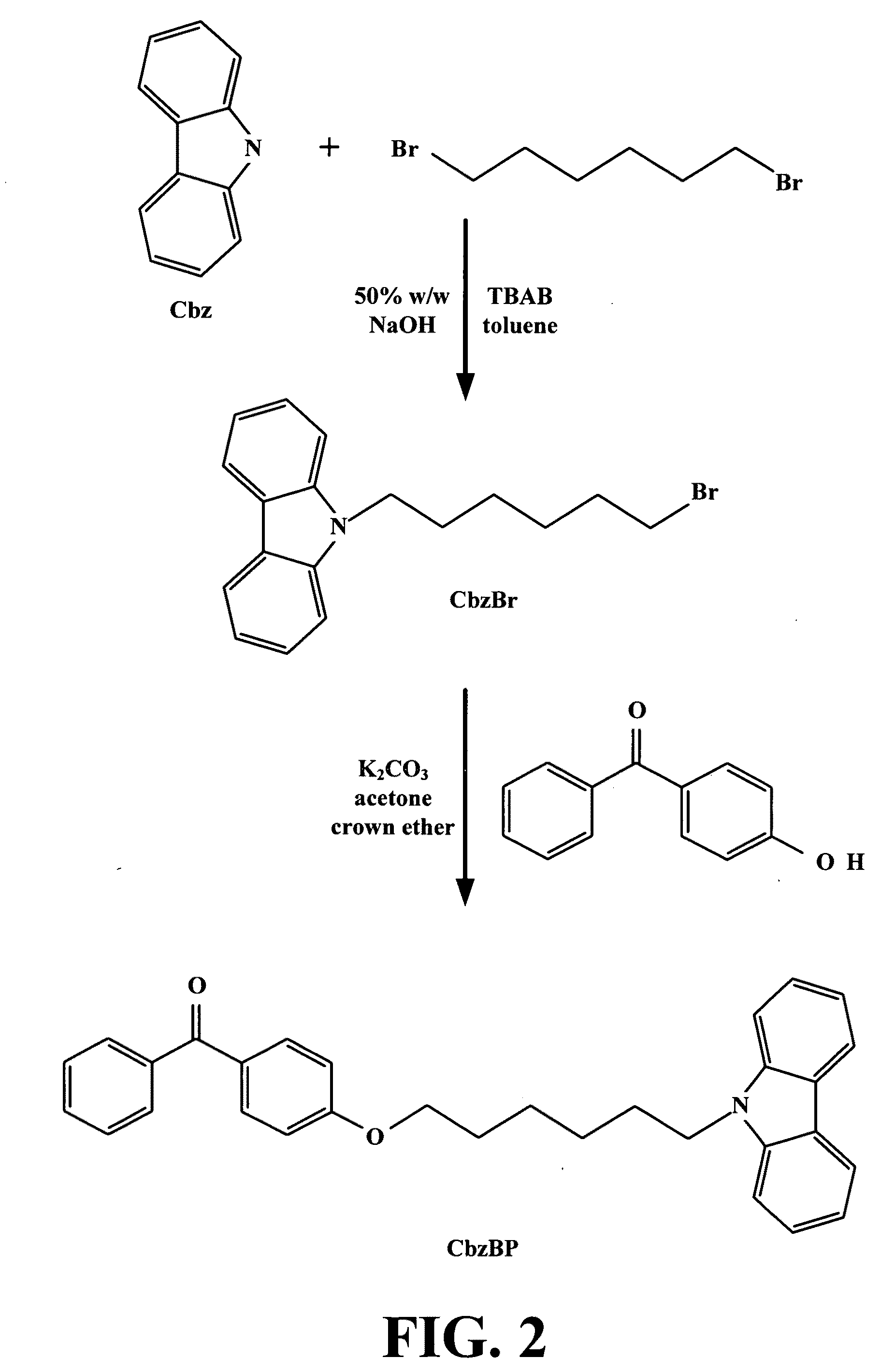Methods for preparing polymer coatings by electrochemical grafting of polymer brushes, compositions prepared thereby and compositions for preparing the coatings
a technology of polymer coatings and polymer brushes, applied in the field of new, can solve the problems of requiring extensive synthetic efforts, abrasion can easily detach these coatings from the solid-substrat surface, and the majority of such studies using this approach have been limited to the self-assembly of silanized benzophenone units
- Summary
- Abstract
- Description
- Claims
- Application Information
AI Technical Summary
Benefits of technology
Problems solved by technology
Method used
Image
Examples
example 1
[0102]This examples illustrates the preparation of bromohexylcarbazole, a compound of the general formula (VII).
[0103]Carbazole (20.6 g, 0.124 mol), 1,6-dibromobutane (267 g, 1.10 mol), tertabutylammonium bromide (2.00 g, 0.00621 mol), 100 mL toluene and a prepared solution of 140 g of NaOH in 140 mL of water were mixed in a 1000-mL round bottom flask equipped with stirrer and condenser. The solution was stirred and heated at 45° C. for three hours and then stirred at room temperature overnight. The resulting solution was transferred into a separatory funnel and the bottom layer drained. The organic layer was washed with distilled water three times and once with brine solution. The solution was dried over anhydrous sodium sulfate and the solvent removed through a rotavap. The resulting mixture was then vacuum distilled to remove the excess alkyl bromide. The residue was dissolved in small amount of dichloromethane and added drop wise to 200 mL stirred ethanol. The resulting precipit...
example 2
[0104]This examples illustrates the preparation of (4-(6-(9H-carbazol-9-yl)hexyloxy)benzophenone (CbzBP), a compound of the general formula (IX).
[0105]Bromohexylcarbazole (1 g, 3.03 mmol), 4-hydroxybenzophenone (0.601 g, 3.03 mmol), potassium carbonate (0.527 g, 3.79 mmol), 18-crown-6 ether (0.200 g, 0.758 mmol) and 40 mL of acetone are mixed in a 100-mL round bottom flask with a stir bar. The reaction mixture is refluxed overnight. The mixture is then poured into 40 mL of water and extracted with ether three times. The resulting mixture is dried over anhydrous sodium sulfate and the solvent is removed in vacuo. The crude mixture is subjected to column chromatography via isocratic elution using 50% dichloromethane / hexanes as eluent. After purification, the white flaky crystals are recovered with a yield of 70.03% and an Rf value of 0.41 (50% dichloromethane / hexanes). The compound had an 1H NMR spectra in (CDCl3) showing the following (ppm) values: 8.10 (d, 2H); 7.89 (d, 2H); 7.83 (d...
example 3
[0106]This examples illustrates the electrochemical grafting of the benzophenone-tethered carbazole monomer, (4-(6-(9H-carbazol-9-yl)hexyloxy)benzophenone (CbzBP) onto conducting surfaces.
[0107]The electropolymerization of CbzBP was initially performed on indium titanium oxide (ITO) substrates by cyclic voltammetry. The electrodeposition was best performed at a scan rate of 50 mV / s, from 0 to 1.3V. The supporting electrolyte was 0.1M tetrabutylammonium hexafluorophosphate in acetonitrile. A representative cyclic voltammogram is shown in FIG. 3. For all the cyclic voltammetry scans, the first anodic scan show no peak, which indicated that the material is initially in its oxidized form. During the first cathodic scan, a reduction peak was observed at around 0.8 V. The subsequent cycles showed peaks at around 0.9 V, which was due to the oxidation of polycarbazole The repeated cycles exhibited an increasing current peak which was attributed to the electropolymerization of the material o...
PUM
| Property | Measurement | Unit |
|---|---|---|
| molecular structures | aaaaa | aaaaa |
| conductive | aaaaa | aaaaa |
| non-conductive | aaaaa | aaaaa |
Abstract
Description
Claims
Application Information
 Login to View More
Login to View More - R&D
- Intellectual Property
- Life Sciences
- Materials
- Tech Scout
- Unparalleled Data Quality
- Higher Quality Content
- 60% Fewer Hallucinations
Browse by: Latest US Patents, China's latest patents, Technical Efficacy Thesaurus, Application Domain, Technology Topic, Popular Technical Reports.
© 2025 PatSnap. All rights reserved.Legal|Privacy policy|Modern Slavery Act Transparency Statement|Sitemap|About US| Contact US: help@patsnap.com



